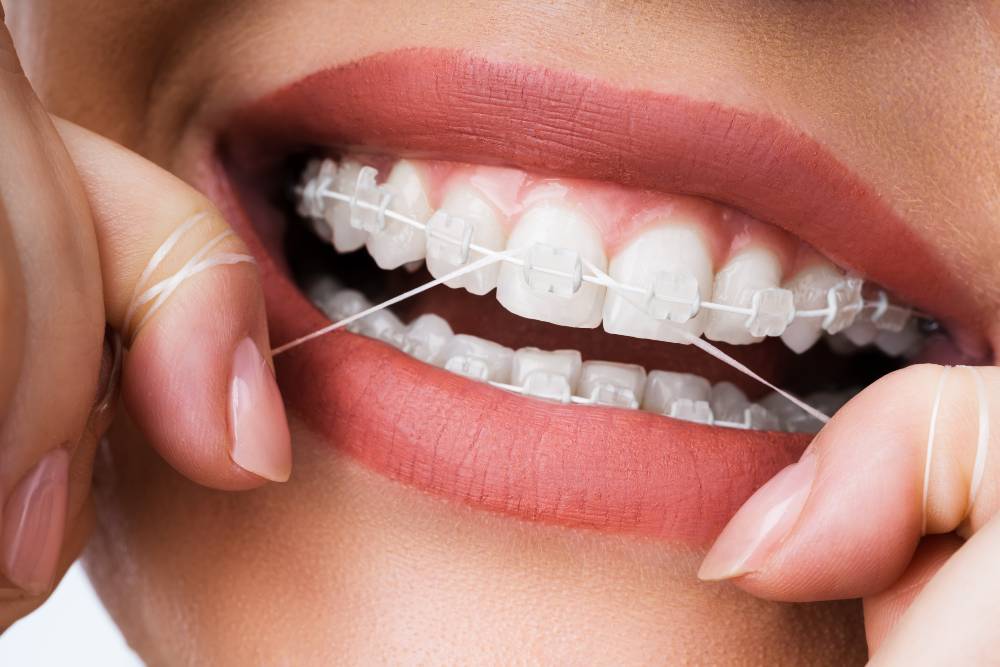What Does Legacy Orthodontics Do?
Table of ContentsWhat Does Legacy Orthodontics Do?Things about Legacy OrthodonticsThe Legacy Orthodontics DiariesLegacy Orthodontics Fundamentals ExplainedLittle Known Questions About Legacy Orthodontics.
At Advanced Orthodontics, we offer patients with a all natural treatment experience. In addition, we provide flexible therapy schedules, flexible repayment alternatives and an enjoyable, satisfying experience. clear braces. Call ( 480) 357-4900 today for more info and routine a visit.An orthodontist is a dental practitioner trained to diagnose, prevent, and treat teeth and jaw irregularities. They remedy existing problems and are trained to determine problems that might establish in the future. Orthodontists function with individuals of any ages, from youngsters to adults. People often associate an excellent smile with healthiness.
Malocclusion, or misaligned teeth, can lead to dental issues, consisting of dental caries, gum tissue disease, and hard or uncomfortable chewing. Not every person is birthed with straight teeth. If you have a poor bite or big areas between your teeth, you might desire to consult a dental practitioner specializing in orthodontic treatment.
The Facts About Legacy Orthodontics Uncovered
( Photo Credit Scores: DigitalVision/Getty Images) Orthodontists utilize repaired and removable oral gadgets, like braces, retainers, and bands, to transform the placement of teeth in your mouth. Orthodontic therapy is for oral abnormalities, including: Jagged teethBite problems, like an overbite or an underbiteCrowded teeth or teeth that are also far apartJaw misalignmentThe goal of orthodontic therapy is to improve your bite.
A healthy and balanced bite guarantees you can eat, chew, and speak properly. While you may think about orthodontists as mainly for children or teenagers who require dental braces, they can correct oral issues at any age. Orthodontists participate in university, dental institution, and orthodontic college. After graduation, they spend 2 or 3 years in an orthodontic residency program.
, however not all dental professionals are orthodontists. They focus on 2 locations: Exactly how to properly and securely relocate teeth Exactly how to correctly assist advancement in the teeth, jaw, and faceOnce an orthodontist has completed training, they have the choice to end up being board licensed.
Legacy Orthodontics - The Facts
Malocclusion leads to tooth overcrowding, an askew jaw, or irregular bite patterns. Malocclusion is typically treated with: Your orthodontist affixes metal, ceramic, or plastic square bonds to your teeth.
Some individuals require a headgear to aid move teeth right into line with pressure from outside the mouth. A retainer is a custom-made device that maintains your teeth official website in location.
They can produce additional room in the mouth without having to draw teeth. Orthodontists make use of cables, medical screws, or plates to support your jaw bone.
You might need to see an orthodontist if you have: Crowding or otherwise adequate room for every one of your teethOverbite, when your upper teeth come by your bottom teethUnderbite, when your bottom teeth are too far forwardSpacing or issues with gapsCrossbite, which is when your top teeth fit behind your base teeth when your mouth is closedOpen bite or an upright gap between your front bottom and upper teethMisplaced midline, when the center of your bottom and top teeth do not align Fixing an oral malocclusion can: Make biting, chewing, and talking easierImprove the balance of our face and your general appearanceEase discomfort from temporomandibular joint conditionsDifferent your teeth and make them easier to clean, assisting stop dental cavity or cavities It's often a dental professional who initially notices misaligned teeth during a routine test.
The Only Guide to Legacy Orthodontics

Throughout your very first orthodontic consultation, you'll likely have: An oral examPhotos taken of your face and smileDental X-raysPanoramic (360 level) X-rays of your face and headImpressions to create molds of your teethThese tests will aid your orthodontist recognize just how to wage your treatment. orthodontics. An orthodontist is a dentist that's had training to treat your teeth and jaw
Orthodontists might perform surgery, exams,X-rays,and more to help you attain a more comfy, healthier smile. An orthodontist is focused on your bite, so something like a chipped tooth would be dealt with by a dentist. Orthodontists are dental experts however not all dental professionals are orthodontists. Orthodontists are concentrated on your bite, or the means your teeth meshed, and the straightness of your teeth.
Ever wondered exactly how stars constantly seem to have completely straightened teeth? Orthodontists are dental experts that concentrate on fixing irregularities in the teeth and jaws.
6 Simple Techniques For Legacy Orthodontics

While braces are one of the most commonly acknowledged orthodontic therapy, orthodontists have a varied toolkit at their disposal. The specific method selected depends upon the extent of the case, the client's age, and individual preferences. These tried-and-true braces make use of a system of braces bound to the teeth and linked by cords.
Clear aligners, like Invisalign, are a prominent option for individuals looking for an extra discreet treatment option. These removable trays are custom-made to gradually move the teeth's placement. Headwear may be made use of in combination with dental braces or aligners to use additional targeted pressures, especially for remedying jaw disparities. In cases of slim jaws, palatal expanders can be made use of to produce space for proper tooth placement.